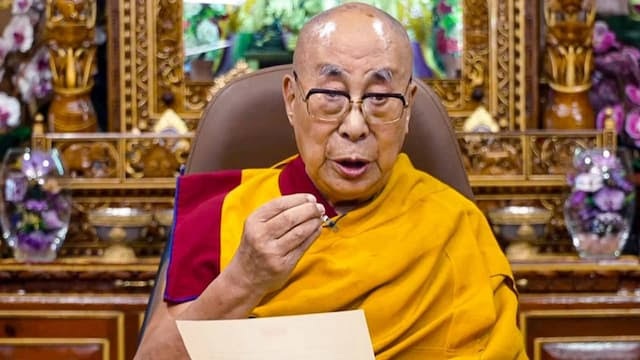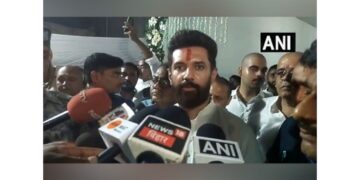The Indian Railways, which is raising accolades on the strong preparations for the Kumbh Mela in the budget session of Parliament, is again under criticism after the accident at New Delhi railway station. Railway has been hit by sharp public outfits due to 18 deaths in the stampede on 15 February 2025 at New Delhi railway station, which is considered to be the most convenience-rich and safe in the country. In the second phase of the budget session, in the proposed discussion on the functioning of the Ministry of Railways, it is natural that the Railway Minister and the top officers will have to face many uncomfortable questions. On February 15, many flaws have been revealed to handle the huge crowd to go to Prayagraj at New Delhi railway station. The investigation of the incident is going on and many cases will be revealed when the report arrives. At present, it has come that between two hours in the evening on the day of the incident, 2600 people bought a special train ticket. Then the railways had to become alert but it was not taken seriously. With compensation of Rs 10 lakh to the families of the deceased and Rs 2.5 lakh to the serious injured and Rs 1 lakh to the injured, the Railways has made several efforts to normalize the situation.
This is not the first case of death in stampede at the station. Earlier, during Mahakumbh 2013, many passengers lost their lives in a big stampede at Prayagraj railway station. Keeping this in mind, the Railways had made relatively big preparations this time. A total of 8,400 vehicles were run during Ardghkumbh 2019 while this time 13,450 trains were planned to run. An expenditure of Rs 5,000 crore has been made in view of Mahakumbh in the last two years with installation of 1,186 additional CCTV cameras for better security management. With the creation of a war room in the rail building, the Railways had made a lot of new attempts.
The safest railway station?
New Delhi Railway Station is the first railway station in the country from which about five lakh passengers, including the most VIP, travel and 350 trains come and go. This is a very busy station, so there are necessary arrangements for better passenger facilities along with security. It has also been decided to make New Delhi railway station a world -class world class in 2022, about a hundred years ago. In the coming years, it will be like an airport. With its reconstruction, the government has decided to have a cost of about Rs 5000 crore with a cost of 9.8 lakh square feet of commercial use.
Woman injured in stampede at New Delhi station
The current station was currently inaugurated by the then President Rajendra Prasad on 16 April 1955. In 1961, the first escalator (moving ladder) was here at a railway station. Later, a lot of expansion continues in it. The area where the situation worsened this time was rejuvenated in view of the Commonwealth Games during Mamata Banerjee’s Railway Minister’s period. Then platform number 16 was also made, which brought great relief to the passengers. A crowd like New Delhi station was seen at many stations in Mahakumbh this time and all the railway arrangements were wired. Along with this, many lessons have also been found by the Railways. It should be taken care of when managing for future fairs and festivals.
Need to change strategy at stations
At present, the number of small and big stations of different categories on Indian Railways is 9,274. The maximum 1,080 stations are under Northern Railway. State -wise, the maximum number of 1191 stations are in Uttar Pradesh, while Rajasthan is ranked third with 785 stations and Rajasthan with 614 stations. In 2017-18, in 2017-18, the income was made and the passenger was made a criteria. In this, the annual income of 21 stations of first number in NSG 1 to 6 category is more than Rs 500 crore. The income of 77 stations in category 2 is between 100 and 500 crores.
The Parliamentary Committee on the Railways opposed the gradation on the basis of income in its 19th report during the 15th Lok Sabha and also said in its recommendation in 2021 that the geographical location of the stations should be categorized on standards like industrial centers, ports, agriculture or horticultural centers, educational institutions, stations should be categorized in non-intelligent and suburban category. Railways did not accept suggestions.
A section of the railway has been insisting on its development since June 2015 through PPP, considering these big and busiest railway stations as a profitable deal. Earlier 19 such stations were selected for development, whose number was increased to 50 and now 100. After the New Delhi incident, many more questions are being raised, including its security aspects, which will not give up the chase of the railway in the coming time.
Growing passengers, extreme facilities
Not only Prayagraj Mahakumbh, Chhath, Deepawali, Holi, Durgapuja and many other festivals have been seen that there is a huge crowd at the stations. Even after running special trains, the railway is unable to handle the crowd. On an average, the pressure of passengers on Indian Railways, which runs 13,523 riders daily, is continuously increasing and facilities are collapsing. In this sense, there is a need to form a strategy.
At present, the railway does not have a shortage of passengers nor goods. The recent assessment suggests that in the last decade, the highest 10.33 per cent of railway passengers have increased in AC-3, while 6 per cent in AC-2 and 6.74 per cent in AC-1. AC Chaircar is increasing by 9 per cent and Executive AC up to 12 per cent annual passenger, but the most popular sleeper class in non-AC category is increasing 4.4 per cent and second class is increasing by 8.76 per cent. The increase in suburban rails is just 2.3 percent. It is understood from these figures that the earnings are now more convenient towards the AC category, but more than 95 per cent of poor passengers travel in unreserved and non-comprehensive coaches of the suburban, ordinary ride vehicles and mail-expenses.
All the emphasis on Vande India
The achievement of indigenous efforts of Indian Railways, the first semi-high speed train Vande Bharat Express was started by Prime Minister Narendra Modi on 15 February 2019 and started a new beginning from New Delhi to his parliamentary constituency Varanasi at the Virat ceremony. Since then, a total of 136 Vande India vehicles have been run. Most of the Prime Minister himself is inaugurated. For this reason, Vande India remains synonymous with Railways for railway officers. All the emphasis of the railway is on the brightness of India, even if other trains are affected by it.
Vanderat Bharat only
By the way, Vande India is usually running full and the status symbol remains. Where weakness is found, the railway immediately pays attention to it, but there are still limited riders. A total of 2.14 crore passengers traveled from Vande Bharat Express of Indian Railways, which carry riders equal to the population of Australia daily. Vande India, equipped with better catering services and many features than the armor system, automatic doors and other trains, is popular. Its sleeper version has also been tested. In the next three years, 200 Vande Bharat train will run and the picture will change. The Indian Railways has wide wide fabric about Vande India. The plan is that by 2047, Indian Railways will run 4500 Vande India. That is, the Indian Railways will become India.
Bullet train is in the grip of late-latency
In recent years, the railway has been criticized for the late latency of the bullet train. Keeping this in view, the government allocated Rs 21,000 crore for the Mumbai-Ahmedabad Bullet Train Project in 2024-26. The first bullet train was to start on 15 August 2022, but so far, even after the expenditure of Rs 67,486 crore, its total progress is 47.17 percent. The 508 km long project is yet to work, while its foundation was laid in 2017. This project worth one lakh eight thousand crores is a joint project of the Government of India, Gujarat and Maharashtra. There is also a committee under the joint chairmanship of the Deputy Chairman of NITI Aayog and Special Advisor to the Prime Minister of Japan to monitor the project.
Accident in Balasore, Odisha
First Railway Minister D.V. in Modi government Sadanand Gowda had announced in Parliament with a significant emphasis on speed extension while presenting the budget of 2014-15 that 9 routes Delhi-Agra, Delhi-Chandigarh, Delhi-Kanpur, Kanpur-Nagpur, Mysore-Bangalore-Chennai route will run highspeed trains on the route, which will speed 160 to 200 km per hour. Bullet train was announced between Ahmedabad to Mumbai, but the project was on paper.
Suresh Prabhu’s railway minister claimed that the journey between 300 and 600 km will be completed in two to two and a half hours. Preparations are being done. In the Rail Development Scheme, till 2047, there was a talk of 7,000 km of high speed rail network, but at present, India is the only one in the world which does not have a single high speed corridor. China has the largest high speed network in the world.
The pride of the railway and the centenary neglected
The capital and Shatabdi trains achieved a lot of reputation in the decades in terms of high speed and time ban on Indian Railways. Today, he is neglected as Vande India. On March 1, 1969, the first capital New Delhi-Howrah went at a speed of 120 km per hour with indigenous efforts. It broke the speed ban imposed for a hundred years. The first AC-3 coach was also installed in Rajdhani Express in 1993. In 1996, satellite -based telephone service started in Mumbai Rajdhani. The Shatabdi Express started between New Delhi-Jhansi in 1988. Over time, many areas joined the capital and Shatabdi. These trains were buzzing.
Despite all the efforts, the speed of Indian Railways’ Mail Express trains is 51.1 km per hour, while the speed of the ordinary passenger train is 35.1 km per hour. The speed of the goods train was only 23.6 km per hour in 2023-24. In this sense, it can be said that even today the Indian Railways is laggard. The expectation of the future for speed rests on the Dedicated Freight Corridor, for which the ground work was originally started during the Railway Minister’s Railway Minister’s period.
Both our eastern and western dedicated freight corridors will change the railway map and the container between Delhi-Mumbai will start reaching in 24 hours which reaches a fortnight several times. With this, the speed of goods trains will be up to 100 km and the speed of passenger trains will also increase. The dedicated freight corridor was to be completed by December 2021, but it was a victim of repeated lethality. Now it can be realized soon.
Railway electrification
Achieving the target of 100 % electrification of Indian Railways during 2025-26 can also be considered a major achievement. This target was to be achieved by 2021-22 but delayed. This will reduce the cost of the railway with a decrease in the oil import bill and will also speed up the mission speed. In 2018-19, the Railways had decided to electrify all the railway network of the big line and so far the 97 percent line has been electrified. During 2014 to 2024, the 44199 route km was electrified while only 21801 km was electrified before 2014, but the Indian Railways made 2024 million tonnes of freight by 2024, with the removal of congested routes under the National Rail Scheme by 2024, the blueprint for 2024 million tonnes of freight from 2024 remained a dream.
Flutter of challenges
Railways need a huge cost of Rs 7.44 lakh crore to complete the pending projects. During the Kovid-19, the concessions of several categories, including senior citizens, were abolished by the Railways, which has not been restored yet. On the contrary, the railway is claiming that it is giving heavy subsidy on rent. 2230.7 crore passengers traveled in the railway in all the reserved and unreserved all categories during 2020-21 to October 2024. Railways claim that it is giving about 46 percent concession to every person. This is an exaggerated claim. Railways also proved wrong that passengers will get tickets on demand. In 2022-23, an average of 96,000 passengers were on the waiting list daily. At the same time, the Flexi Fair Tatkal, Premium Tatkal Railways has earned hugely in three categories.
If we look at the overall situation, the goods of the railway are going to increase from Rs 1.17 lakh crore in 2017-18 to Rs 1.88 lakh crore in 2025-26. At the same time, passenger income will increase from Rs 70,693 crore to Rs 92,800 crore in 2023-24, but the operating ratio of the railway will also be 98.43 percent in 2025-26. Therefore, the money created by the money created will not be in a position to contribute to the railway development.
More than 275 people died on the spot in a terrible railway accident in Baleshwar, Odisha on 2 June 2023 during the time of current Railway Minister Ashwini Vaishnav. A year later, the Kanchenjunga train accident shocked everyone. Nevertheless, only 11.62 lakh employees are working as compared to 14.74 lakh posts approved in the railway. Of more than three lakh vacancies, 1.22 lakh are of safety category and loco pilots have to pay more than 10 hours duty.
Railway security safety expenditure increased from 55.9 thousand crores to 1.08 lakh crore in 2024-25 in 2016-17, but there was no expected increase in the work of fixing the railway tracks. This has increased the incidence of landing of railway tracks. 50 per cent lines of Indian Railways are handling 80 per cent of the burden. Not only this, 100 to 150 percent traffic is running on 25 percent railway network. All these facts show that to fix the condition and direction of the railway, the government will also have to show will.
(Senior Journalist and Former Advisor, Indian Railways)





